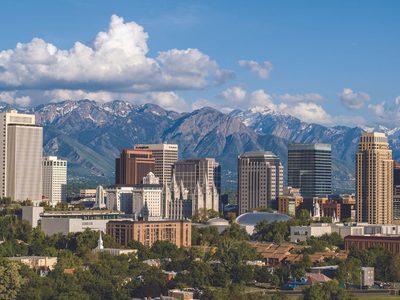Topsoil moisture was rated very short in most corn, soybean, peanut and sunseed production areas on Feb. 19, but at this time of year it is not the topsoil that is most important for summer crop development. It is the subsoil that is most important for crop development. Moisture down deep in the soil usually will support summer crops during periods of dry and warm weather in any summer when the topsoil firms up. However, the latest soil assessment for Argentina shows only slightly better soil conditions down deep into the ground. The lack of moisture and frequent warmer-than-usual temperatures has contributed to crop stress, which is pressuring production lower.
Satellite imagery has suggested vegetative health in Argentina is worse than that of 2012, but not as severe as that of 2009. It is interesting to note that Argentina’s last severe drought occurred near the solar minimum and during a La Niña event, which is similar to conditions of this year. It may be a coincidence, but it has been proven since 1950 that La Niña events tend to occur in the year of the solar minimum or during the previous year. La Niña events are not very kind to Argentina summer crop production, and cuts tend to occur more often than not. The next solar minimum is due in 2019.
The drought of 2008-09 was initiated by the La Niña event and solar minimum that were affecting the world in 2008. The intensity of drought in the 2008-09 crop year was many times more serious than that of this year mainly because of hot, dry, weather that occurred during the spring and then continued during the summer.
Recent weather in Argentina has offered some shots of notable cooling. In fact, low temperatures just a few days after extreme highs breached 108 degrees Fahrenheit in the heart of Argentina, the low temperatures slipped to the middle 30s Fahrenheit. Such a wide swing in temperatures can only be achieved when soil and atmospheric conditions are extremely low on moisture. It is similar to a desert environment. The cool weather may have been indicative of extremely dry conditions, but it brought some relief to crops that were most seriously stressed from heat and dryness.
More than half of the summer coarse grain and oilseed crops already have reproduced, and since field conditions were not as extreme as those of 2008-09 production they likely will end the growing season a little better. The Vegetative Health Indices for Argentina this summer clearly show crop conditions better than those of recent past drought years.
The drought in Argentina should be nearing a crossroad. Many long-term trends in the atmosphere have suggested in years past when drought has occurred in a manner similar to that of this year improved rainfall has come along in March and April. The wetter bias that is advertised for the region in the next couple of months may come a little late in the growing season, leaving some of the production cuts irreversible.
Unlike Argentina, Brazil crop stress has been minimal most of the summer season. Recent rainy weather has presented the biggest challenge of the growing season. Delays to harvesting already were pre-programmed for this year’s crops because of delays getting the soybean crop planted early in the spring. Those delays were now becoming more significant because of the need to get soybeans harvested and second season corn and cotton planted. The rainy weather is further delaying an already delayed crop harvest, and that may lead to greater declines in intended planting acreage of second season crops.
Despite the recent wet weather, Brazil’s Vegetative Health Index maps show a crop of soybeans and corn that is either as good as or slightly better than that of last year. Northeastern parts of Brazil have been dealing with a multi-year drought that has cut into production in many of the last several years. However, this summer’s rainfall distribution in the northeast of Brazil has been more frequent and more significant, resulting in higher potential yields from the region. That may be countering some of the lower production potentials that are advertised for some center south Brazil production areas due to the frequent rainfall pattern.
The largest threat to Brazil crops is not the current wet biased pattern, but the withdrawing summer monsoon. The annual rainy season often ends in late March or early April. Some of the soybean crop will not be harvested prior to early March, and that places reproduction of corn and other second season crops into the traditional dry season. The end of seasonal rainfall in late March and April likely will leave second season crops to reproduce without the benefit of timely rainfall. Once subsoil moisture is exhausted crop stress will settle in and that will lead to lower production potential for corn and cotton. The soybean crop, however, will not likely be cut — at least not significantly.
Rainy weather in Brazil does need to cease so that summer crops will fill, mature and be harvested in the best possible environment.
In the meantime, South Africa’s summer coarse grain and oilseed production has advanced relatively well, although western most portions of the crop region have been struggling with some dryness. Dryness also has affected eastern Australia’s sorghum, sunseed, cotton, soybean and peanut production area throughout the summer, but may soon receive some late season rain.








